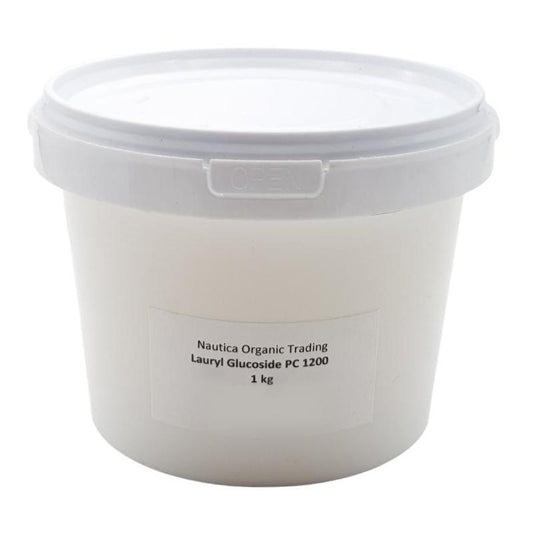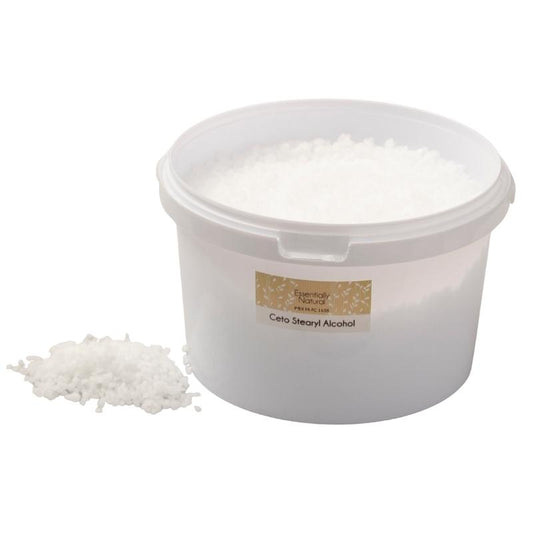
Surfactants Part 5.2: DIY Shampoo Recipes
Juliette van der MeerAs promised, this second installment of DIY Shampoos is all about recipes. If you’ve read Surfactants P5.1 where we shared our favourite natural shampoo ingredients (but by no means the full list), you will know more or less what goes into a good shampoo. Now it's time to formulate!
The beauty about making your own surfactant based shampoos is that you control what you put on your hair and scalp, but can still get ‘professional’ results, hair that is beautifully clean and shiny, as well as help save the environment from nasty chemicals as all our surfactants are fully biodegradable. You can also customise your shampoo to suit your unique hair needs.
So let's begin to formulate.
Make Your Infusions
I love herbal infusions! While you can easily make your shampoo without them (just use water instead), I find they greatly benefit your hair and scalp and so they come highly recommended.
To make, boil about 1 cup of distilled water and pour it over 2-3 teaspoons of your chosen herb(s). If your herb is powdered you will only need about 1.5-2 teaspoons. Leave to infuse overnight, then strain and your infusion will be ready for use.
- Peppermint leaf infusion leaves scalp feeling clean and fresh, and also stimulates hair follicles.
- Nettle is great for hair loss, helping along new hair growth and clearing up oily and dandruff prone hair. Nettle is also rich in vitamins A and C, iron and trace minerals as well as chlorophyll. Keep in mind that nettle can be irritating to some if used undiluted, so although it will be diluted in your shampoo formula, it would be best to do a patch test first.
- Marshmallow root contains a substance called mucilage, which binds to hair strands and therefore has a volumising effect. It is also slightly slippery, making it a good detangler and conditioner. Marshmallow is also a moisturiser and is perfect for those with dry or brittle hair.
- Horsetail root is a somewhat smelly herb but it's worth it. Horsetail is rich in the minerals selenium and silica. Selenium assists the body in processing iodine, which regulates hair growth. A deficiency in iodine can limit and even stop hair growth altogether. Silica promotes the structural integrity of hair strands, strengthening them, increasing shine and improving texture. To use, get the powdered herb and soak in freshly boiled distilled water overnight, then strain. The smell will dissipate as soon as you add the solution to your shampoo formula.
- Dried hibiscus is the gorgeous flower of the hibiscus tree, and has a deep pink red hue. It can be used as a colourant and is handy as a hair conditioner and volumiser and also increases shine. It can be made into a solution when soaked in water or hydrosol and turns bright pink, can be infused into oils (turns a deeper red colour), or the ground powder can be used as a gentle exfoliating scrub. Hibiscus tea can help to lower hypertension, blood pressure and blood sugar levels. It can also help with cramps and aid digestion. What a wonderfully useful flower!
Some other nice herbal infusions might be: lavender, rosemary, aloe vera, green tea, ginseng (for hair growth and to treat baldness) and moringa (a natural conditioner).
ASM for Shampoos
If you are wanting to formulate your own shampoo recipe, you will be watching out for how much of each surfactant to use. You will be using a primary surfactant followed by the secondary surfactant. Use cocamidopropyl betaine as an additional surfactant to make your surfactant blend more mild and balanced. For a shampoo, you will be looking for a total Active Surfactant Matter of 10-15% depending on how oily your hair is (use the higher figure for a more clarifying shampoo).
To calculate surfactant amounts for a shampoo with an ASM of let’s say, 13%, first assign values to your chosen surfactants:
As an example: Lauryl glucoside 5; coco glucoside 4; cocamidopropyl betaine 4. You can assign any value to your surfactants, adding to 13, but I quite like these proportions as I find it makes a nice mild shampoo.
Now we calculate:
Lauryl glucoside (with own ASM of 50%): 5/0.5 = 10
Coco glucoside (with own ASM of 55%): 4/0.55 = 7.3
Coco betaine (with own ASM of 30%): 4/0.3 = 13.3
All other ingredients to 100 (*I often include way more than this, but I like a mild shampoo. This is the technically correct amount, and I suggest you start with this and then experiment from there if you like).
And there we have our surfactant blend! The values can be in mils (recipe will then be for 100ml, otherwise multiple accordingly for a larger amount), grams (recipe will then be for 100g, otherwise multiple accordingly for a larger amount and make sure all other measurements are also in grams), or percentages.
Please refer to A Beginner’s Guide to Surfactants for a more detailed explanation of ASMs.
pH
With hair care, we are looking for a pH of between 4.5 to 5.5. So make sure you have pH test strips handy, as well as some citric acid solution. Make up a solution with ¼ teaspoon citric acid in ⅕ c distilled water. Stir it until fully dissolved and then use as necessary.
Recipes
Now that we know what's what, let's get down to some recipes.
Basic Clarifying Shampoo Recipe
Below is your basic clarifying shampoo recipe, with no bells or whistles. It is effective and easy to make. Once you’ve practiced, feel free to start experimenting by adding in extra ingredients.
Ingredients:
Phase A
- 140ml distilled water, hydrosol or infusion (or a combination) + extra if necessary
- 4ml xanthan gum
- 10ml vegetable glycerine
- 4 ml D-panthenol (optional but recommended)
- 2ml preservative such as Geogard 221
Phase B
- 15ml lauryl glucoside
- 10ml coco glucoside
Phase C
- 15ml cocamidopropyl betaine
- 2ml essential oils of choice
- citric acid solution
- pH test strips
Method:
- Hydrate the xanthan gum by blending it with the glycerine.
- Add the panthenol if using and add the preservative to the water then trickle in and blend to a smooth gel consistency.
- In a separate beaker, blend the lauryl and coco glucoside together to a paste.
- Add the aqueous solution to the surfactants and blend. You might find you want to add in some additional liquid depending on the consistency.
- Blend in the coco betaine and essential oils. Test the pH and adjust to around 5 with the citric acid solution.
























5 comments
Hi Hetanxi, I don’t currently have any recipes or blogs on solid shampoo bars. When I do, I’ll be sure to discuss the ASM.
Hello, I checked your blog post for beginner’s guide to surfactants. I wanted to know how ASM% differs for a solid shampoo bar and also, could you share formulations for the same?
Hi Christelle, yes these recipes don’t contain any salt.
Hi, are the recipes “salt free” shampoo?
Thanks
Het julle enge isopropiel alkohol beskikbaar?